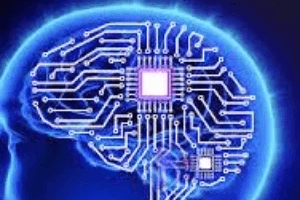
Artificial Intelligence Technology
(AIT)
Management competencies in the age of Artificial Intelligence
Vision
Management in the age of Artificial Intelligence
The probability is high that Artificial Intelligence (AI) will provide the answer to future product and market innovations. It has the ability to induce fundamental change in products, markets, models and paradigms. Manufacturing and a wide spectrum of services are undergoing a near revolutionary change driven by AI delivered innovations. Computing equipment capable of what one may term partial and quasi intelligent behavior is the trigger. Ways and means of converting this new phenomenon into the strategic behavior of firms is yet to be addressed in executive competency programs.
This will be AIT's performance domain.

视觉
♈️
人工智能时代的管理
人工智能 (AI) 为未来的产品和市场创新提供答案的概率很高。它有能力促使产品、市场、模式和模式发生根本性变化。在 AI 带来的创新推动下,制造业和广泛的服务正在经历一场近乎革命性的变化。能够称之为局部和准智能行为的计算设备是触发因素。在高管能力计划中,尚未讨论将这种新现象转化为公司战略行为的方式方法。
这将是 AIT 的性能域。
Programs coverage
🔴
*Foundations of Artificial Intenlligence
*Technology, innovation and AI management
*Artificial intelligence and data analytics
*Data analytics and artificial intelligence in finance
*Data analytics
and artificial intelligence in health management Strategic Thinking
*AI and Data Analytics software
*AI and Data Analytics hardware
*Chip industry strategies for tomorrow
🔴
Program delivery
Programs are delivered online and offline.
Selected programs

CEO fundamentals
CEO Artificial Intelligence roadmap
An executive competency program
Objective
By the end of this program the participants will be able to:
• Identify fundamental concepts of artificial intelligence
• Understand basic AI technologies
• Recognize AI potential in different industries.
• Position his organizations in the AI application scale
Duration
12 contact hours
Contents
• Fundamental artificial intelligence concepts
• AI technologies
• Data analytics
• AI industry applications
• AI market
• AI trends
Material
Handouts provided by instructors. Articles on AI systems. Cases on AI industry applications.
Resource people
List follows
*******************************************************************
Mini MBAs
Artificial Intelligence in the manufacturing industry
By the end of this program participants should be in a position to identify future AI – triggered manufacturing technologies and emerging opportunities and modes of compliance. Program will extend over five workdays.
⭕Contents
What is AI
AI and the 5th Industrial Revolution
AI and future manufacturing technologies
Virtual Reality/computer vision
Generative design
Digital twining
Predictive maintenanc
Robotics and automization
AI and the organization of manufacturing
Neo-Manufacturing and strategic design.
***************************************************************
🔴

Masters in Artificial Intelligence
"MAI"
Professional Degree program providing state of the art competencies in the wide field of Artificial Intelligence
Objectives
By the end of this program the participant should be in a position to
• Identify the conceptual and operational framework of AI
• Be able to apply AI tools to specific functional areas
• Relate AI to strategic behaviorDuration :
36 credit hoursContents
Concepts
AI conceptual framework
Systems concept
Function concept
Time conceps
Technologies
Data analytics
Software tools (generetics, Deepseek etc)
Integrated circuit technology and AI hardware
Competencies
Generic AI competencies
Managerial competencies
Industry related competencies ( Health, Capital , Defense)
Accreditation
Several venues are considered.
AAIME. Canadian private accreditation organization .
ECBE, European Council for Business Education.
A European accreditation organization
Completionreward
Professional degree in Artificial Intelligence MAI.

Programs accredited by" aaime "
www.aaime.net
⭕
由"aaime"验证的程序
www.aaime.net
************************************************************************
Publications and research
***
Artificial Intelligence data syndrome!
M.S.S.El Namaki
https://doi.org/10.59822/IJEBER.2025.5203
Abstract- Data lies at the heart of our artificial intelligence revolution. Massive volumes of data hold the key to the analytical processes that induce artificial intelligence outcomes. Data is drawn from a wide variety of sources. Yet data are neither homogeneous, generic nor mailable! Data are amorphous whole and carry with it a myriad of problems. This could and does induce "data malfunctions" or “data syndrome” and the derived issue of data reliability. The following article addresses this issue.
The article is qualitative in approach. It identified several triggers of data malignance going all the way from data deluge and data synthetics to data poisoning, data cannibalism and data multi science roots. It further identifies and analyses two prime sources of syndrome: data deluge and the multi science roots of data. The article tries to place this observed data malignance within a framework. It identifies the sources and tries to develop a conceptual framework for the phenomenon.
The conclusion suggests a set of hypotheses that could be explored further. Key words AI data, Data syndrome, data deluge, multi science data roots.
🔴
Advances in Systems Analysis of Artificial
Intelligence
M. S. S. El Namaki
https://doi.org/10.9734/bpi/strufp/v11/1671
Abstract
Artificial Intelligence (AI) is a branch of computer science dealing with the simulation of intelligent behavior. Artificial Intelligence (AI) constitutes an morphous phenomenon. There are many different conceptions, subconcepts, and hypotheses offered. Technologies are praised, but the final results remain unclear. It appears to be an industry in its infancy, with the life cycle itself enveloped in a future mystique. This article focuses on methods for enclosing this
idea within a systems framework. The article resorts to qualitative analysis. An AI system construct is the ultimate objective of the analysis. It advances a systems theory framework as the boundary
for an AI structure where all things would fall into place. The article suggests a framework where an artificial intelligence system has inputs, transformation processes and output. A feedback loop as well. AI Inputs, transformation and output elements are all present-day concepts referred to in current literature but not related to each other within a systems structure.
The article concludes with a system construct for artificial intelligence. It further applies this system construct to a contemporary management issue i.e. strategic thinking. It relates system outcomes to strategic thinking patterns and modes. It suggests a strategic thinking framework that makes use of the outcomes of AI system flows, and translates those into strategic behavior patterns and approaches.
The article provides a convenient vehicle for understanding the components of artificial intelligence and their flow. Also, the relationship between AI system outcomes and strategic thinking. It could be useful in understanding AI applications and their situational relevance.
🔴
Profiles
Dean
Prof dr m s s el namaki
Faculty
Prof R de Werk
Prof Maher Mujtahid
Prof Amr Sadek
***
Expression of program interest
Please complete this information and forward it to
info@ait-ai.org
***
Personal data
Full name
Birthdate
Address incl email
Education
Undergraduate/ Graduate/ Executive
Positions
Current/ Key functional areas
Past / Key functional areas
Professional plans
Present competencies
Desired competencies
AI desired focus
Concepts
Software
Hardware
Strategies
Others
Industry focus
Health
Capital / marketing / others
****************************

Prof el namaki, Dean
Contact us
1. Richmond BC V7A, Canada
2. Rijksstraatweg 729b,2245cc Wassenaar, Netherlands.xxx90For AIT application form please write dr.el.namaki@gmail.com
© 2025






